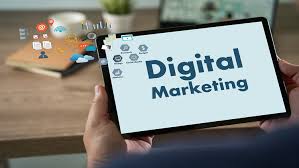Revolutionizing ITS Software Development Approaches
ITS software development is undergoing a transformative shift as new methodologies and technologies emerge, poised to revolutionize how intelligent transportation systems are designed and implemented. With the growing complexity and demands of modern transportation networks, traditional software development approaches are often insufficient to address the evolving needs for efficiency, safety, and sustainability. This necessitates innovative solutions and agile practices that can keep pace with rapid advancements and integrate seamlessly with cutting-edge technologies. By harnessing the power of data analytics, artificial intelligence, and cloud computing, the ITS industry is redefining the landscape of software development, leading to smarter and more resilient infrastructure. As we step into this new era, the potential for optimized traffic management, improved public transit systems, and enhanced passenger experiences becomes increasingly tangible, promising a future where mobility is not only more accessible but also more intelligent.
Revolutionizing Intelligent Transportation Systems (ITS) software development involves embracing emerging technologies and methodologies that enhance the efficiency, reliability, and scalability of transportation solutions. Here are several key approaches and technologies driving this transformation: 1. **Agile Development**: Agile methodologies promote iterative development, collaboration, and flexibility, allowing ITS developers to respond quickly to changes in technology and user requirements. 2. **Microservices Architecture**: By breaking down applications into smaller, independent services, microservices architecture enables more manageable development, testing, and deployment, improving system scalability and fault tolerance. 3. **Artificial Intelligence and Machine Learning**: AI and ML technologies are integral in processing vast amounts of transportation data to provide real-time insights, predictive analytics, and automated decision-making in areas such as traffic management and autonomous vehicle navigation. 4. **Cloud Computing**: Utilizing cloud platforms allows ITS developers to leverage scalable infrastructure, reducing the need for extensive in-house resources and enabling seamless updates and maintenance. 5. **Internet of Things (IoT)**: IoT technology facilitates the integration of a wide array of sensors and devices across transportation networks, providing real-time data and connectivity that enhance system coordination and efficiency. 6. **Cybersecurity Enhancements**: As ITS becomes more interconnected, ensuring robust cybersecurity measures to protect data integrity and user privacy becomes critical. Implementing advanced encryption, threat detection, and response strategies is essential. 7. **Open Data and Standards**: Promoting open data initiatives and adopting industry standards ensures interoperability between different systems and facilitates innovation through shared insights. 8. **DevOps Practices**: By integrating development and operations teams, DevOps practices streamline the software delivery pipeline, enhancing the speed and reliability of releases and updates. 9. **User-Centric Design**: ITS solutions that focus on user experience through intuitive interfaces and accessible design can significantly increase adoption and effectiveness. 10. **Simulation and Modelling Tools**: Advanced simulation tools enable developers to test and optimize transportation systems in virtual environments, minimizing the risks and costs associated with testing in real-world conditions. These approaches collectively contribute to creating smarter, more adaptive transportation systems capable of addressing the complex challenges of modern urban mobility and logistics.
Transforming Ideas into Solutions: ITSS Software Development

ITSS software development has become a cornerstone in today's rapidly evolving tech landscape, catalyzing the digital transformation across various industries. By leveraging cutting-edge tools and methodologies, ITSS software development fosters the creation of innovative solutions tailored to meet complex business challenges. The unique approach adopted by ITSS ensures that software products are not only robust and scalable but also adaptable to the dynamic needs of the market. Whether it's enhancing cybersecurity, optimizing operational processes, or pioneering advancements in artificial intelligence, ITSS software development continues to drive technological progress, supporting businesses in achieving their strategic objectives.
Transforming Ideas into Solutions: ITSS Software Development is a process that involves turning conceptual ideas into practical and operational software applications. This approach covers various stages of software development, emphasizing innovation, tailored solutions, and agility. Key aspects include: 1. **Idea Generation and Feasibility Analysis**: This initial phase involves brainstorming and evaluating ideas, assessing their feasibility, market potential, and alignment with business goals. 2. **Requirements Gathering**: Engaging with stakeholders to gather precise and comprehensive requirements, which are critical for defining the scope and objectives of the software project. 3. **Design and Prototyping**: Creating design layouts and prototypes to visualize the final product, which helps in identifying potential issues and ensuring clarity in user requirements before development begins. 4. **Development**: Utilizing agile or iterative development methodologies to build the software incrementally. This allows for continuous testing and adaptation based on user feedback, ensuring the solution remains aligned with user needs. 5. **Quality Assurance and Testing**: Implementing rigorous testing procedures to identify and resolve defects, ensuring the software meets quality standards and performs reliably in various scenarios. 6. **Deployment**: Releasing the software product for use in a production environment, which includes setting up servers, databases, and other infrastructure components. 7. **Maintenance and Updates**: Post-deployment activities that involve monitoring the software for bugs or issues, providing updates and patches, and incorporating user feedback into future versions. 8. **User Training and Support**: Offering training sessions and ongoing support to ensure users can effectively utilize the software, maximizing its benefits for the organization. Transforming Ideas into Solutions emphasizes collaboration, creativity, and alignment with business goals, ensuring that the final software product effectively addresses the original ideas and requirements.
Exploring Innovations in ITSS Software Engineering

Exploring Innovations in ITSS (Intelligent Transportation Systems and Services) Software Engineering involves examining the latest advancements and methodologies in the design, development, and implementation of software solutions aimed at improving transportation systems. Key areas of innovation include: 1. **Advanced Data Analytics**: Leveraging big data analytics and machine learning to process and analyze large volumes of traffic and environmental data for better decision-making and predictive modeling. 2. **IoT Integration**: Incorporating the Internet of Things (IoT) to connect vehicles, infrastructure, and sensors, facilitating real-time communication and data exchange to enhance safety and efficiency. 3. **Cloud Computing**: Utilizing cloud-based platforms for scalable and flexible infrastructure, enabling real-time data processing and analytics, as well as remote software updates and maintenance. 4. **AI and Machine Learning**: Implementing artificial intelligence and machine learning algorithms to optimize traffic flow, predict congestions, and manage public transportation systems efficiently. 5. **Cybersecurity Innovations**: Developing robust security frameworks to protect transportation systems from cyber threats, ensuring data integrity, privacy, and resilience against attacks. 6. **Human-Machine Interfaces**: Designing intuitive human-machine interfaces (HMIs) that enhance user engagement and provide seamless interaction with transportation systems, such as in autonomous vehicles. 7. **V2X Communication**: Exploring vehicle-to-everything (V2X) communication technologies that enable vehicles to communicate with each other and roadside infrastructure, improving safety and traffic management. 8. **Autonomous Driving Systems**: Advancing software engineering for autonomous vehicles, focusing on sensor integration, decision-making algorithms, and path planning to achieve higher levels of autonomy. 9. **Sustainable Technologies**: Developing software solutions that promote eco-friendly transportation, such as optimizing routes for reduced emissions, and integrating electric vehicle infrastructure. 10. **Participatory Sensing**: Engaging citizens in data collection efforts through mobile applications and social media to gather real-time information about traffic conditions and public transport usage. Innovations in ITSS software engineering are crucial for developing intelligent transportation solutions that are safer, more efficient, and environmentally sustainable, ultimately enhancing the overall mobility ecosystem.
Why ITSS Software Development is Essential Today

ITSS (Information Technology Service and Support) software development is essential today for several reasons: 1. **Digital Transformation**: Businesses are undergoing digital transformation to remain competitive. ITSS software helps manage and streamline IT processes, enabling organizations to integrate new digital technologies efficiently. 2. **Operational Efficiency**: By automating routine tasks and optimizing IT services, ITSS software increases operational efficiency. It allows IT teams to focus on strategic initiatives by reducing the burden of manual processes. 3. **Scalability**: As organizations grow, their IT needs become more complex. ITSS software provides scalable solutions that can adapt to increasing demands without compromising performance or service quality. 4. **Cost Reduction**: Efficient management of IT services reduces operational costs. ITSS software minimizes the need for extensive manual intervention, thereby cutting down labor costs and reducing the risk of errors. 5. **Enhanced Security**: Cybersecurity is a critical concern for modern businesses. ITSS software includes robust security features that protect sensitive data and prevent unauthorized access, helping organizations maintain compliance with regulatory standards. 6. **Improved User Experience**: Ensuring a smooth and efficient experience for end-users is crucial. ITSS software aids in quick issue resolution and streamlined service delivery, thereby enhancing user satisfaction and productivity. 7. **Data-Driven Decision Making**: ITSS software provides analytics and reporting tools, offering insights into IT operations. This data-driven approach supports informed decision-making and strategic planning. 8. **Integration Capabilities**: Modern businesses use a variety of platforms and applications. ITSS software offers integration capabilities, ensuring seamless interoperability between different systems and enhancing overall functionality. 9. **Customization and Flexibility**: Businesses have unique needs, and ITSS software comes with customizable options to tailor solutions specific to organizational requirements. This flexibility is crucial in addressing diverse operational challenges. 10. **Competitive Advantage**: Implementing advanced ITSS solutions positions businesses ahead of the competition by improving service delivery, operational efficiency, and customer satisfaction. In the rapidly evolving digital landscape, ITSS software development plays a pivotal role in ensuring that businesses can leverage technology to its fullest potential, driving growth and innovation.
ITSS Software Development: Pioneering the Digital Frontier
ITSS Software Development: Pioneering the Digital Frontier is a title often associated with entities or initiatives that focus on advancing technology and software solutions. Although there might not be specific details about an organization or publication with this exact title, the phrase broadly suggests an emphasis on innovation and leadership within the digital environment. Such a venture would typically aim to lead the charge in developing cutting-edge software, integrating new technologies like artificial intelligence, machine learning, and blockchain into various applications. It would likely focus on creating solutions that not only address current technological challenges but also anticipate future needs, ensuring adaptability and competitiveness in a rapidly evolving digital landscape. Being on the forefront, ITSS Software Development would prioritize research and development, investing in high-skilled talent and fostering a culture of continuous learning and innovation. It might also be involved in collaborative projects, linking with other tech companies, academic institutions, and industry experts to harness a wide pool of knowledge and expertise. The initiative could span various industries, offering custom software solutions, enhancing digital infrastructures, or improving user experiences through refined interfaces and advanced functionalities. Emphasizing scalability, security, and efficiency, the organization would likely focus on delivering products and services that optimize operations and drive growth for its clients. Overall, this endeavor suggests a vision to redefine and expand how software and technology can transform industries, providing pioneering solutions that shape the future digital landscape.
The Future of ITSS Software Development Unveiled
"The Future of ITSS Software Development Unveiled" likely refers to a report, white paper, or event addressing the evolving landscape of software development within the field of IT Service Support (ITSS). Key themes generally include: 1. **Artificial Intelligence and Automation**: AI and machine learning are increasingly being integrated into ITSS software to automate routine tasks, enhance decision-making, and predict system needs or failures before they occur. 2. **Cloud Computing**: The shift towards cloud-based solutions continues to grow, offering flexibility, scalability, and cost-effectiveness. This transition affects how ITSS software is developed and implemented, with a focus on hybrid and multi-cloud environments. 3. **DevOps and Agile Methodologies**: The adoption of DevOps and Agile practices facilitates faster development cycles and more collaborative environments, enabling quicker responses to changing business needs and improving product quality. 4. **Cybersecurity**: As cyber threats become more sophisticated, ITSS software development is increasingly prioritizing security features, including advanced threat detection, vulnerability management, and compliance with global data protection standards. 5. **User Experience (UX)**: An increased focus on enhancing the user experience to ensure that ITSS tools are intuitive and efficient, ultimately improving user satisfaction and productivity. 6. **Integration with IoT**: With the rise of the Internet of Things, ITSS software is evolving to support IoT devices, providing integrated management and monitoring capabilities across all connected devices. 7. **Data Analytics and Big Data**: Leveraging big data analytics for more informed decision-making processes within ITSS software, enabling organizations to harness insights from vast amounts of data. 8. **Sustainability and Green IT**: A growing emphasis on developing software solutions that minimize environmental impact, foster energy efficiency, and support sustainable business practices. These trends collectively shape the trajectory of ITSS software development, as organizations strive to enhance service delivery, maximize efficiency, and stay competitive in a rapidly changing technological landscape.
تعليقات
إرسال تعليق